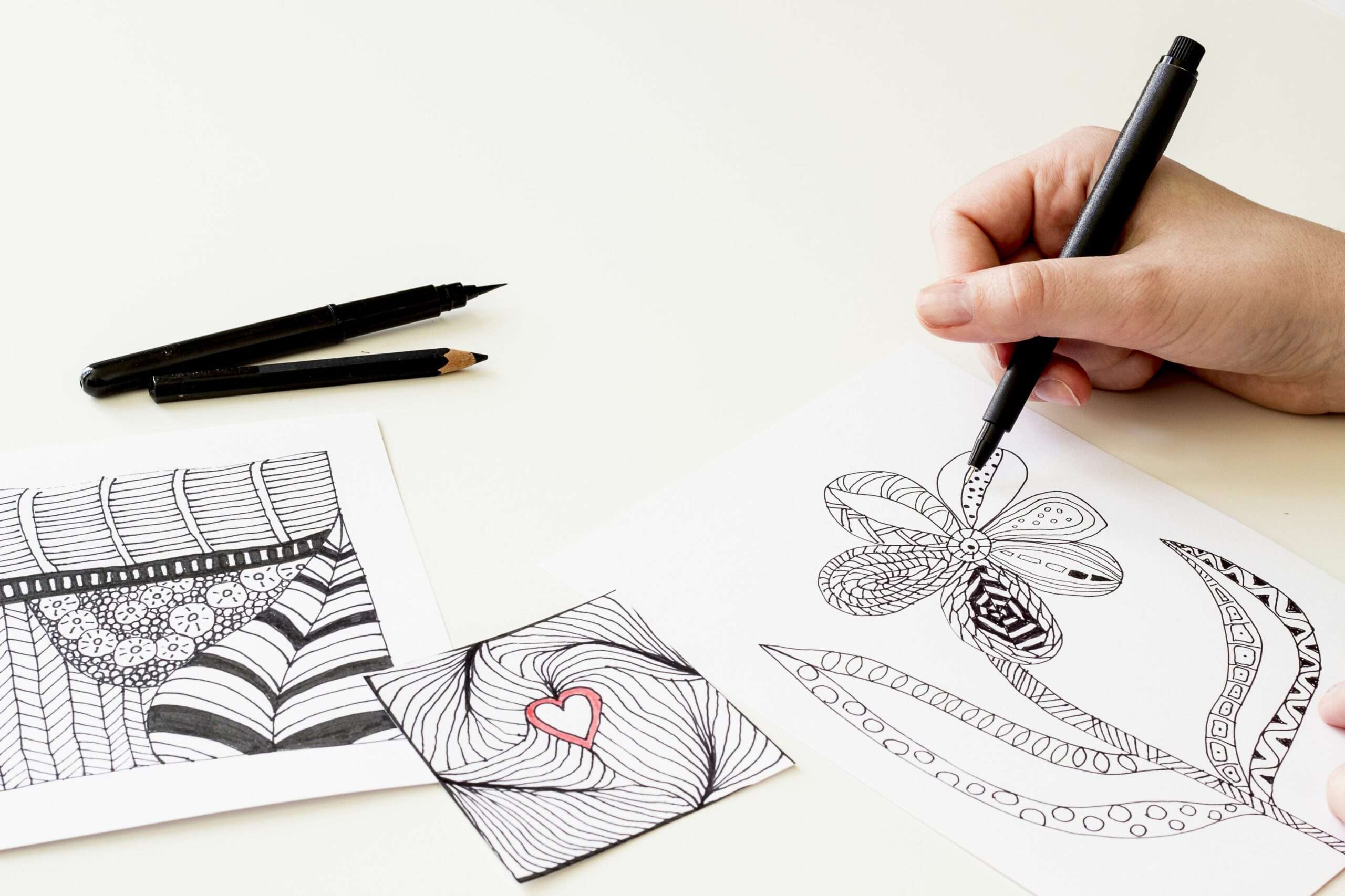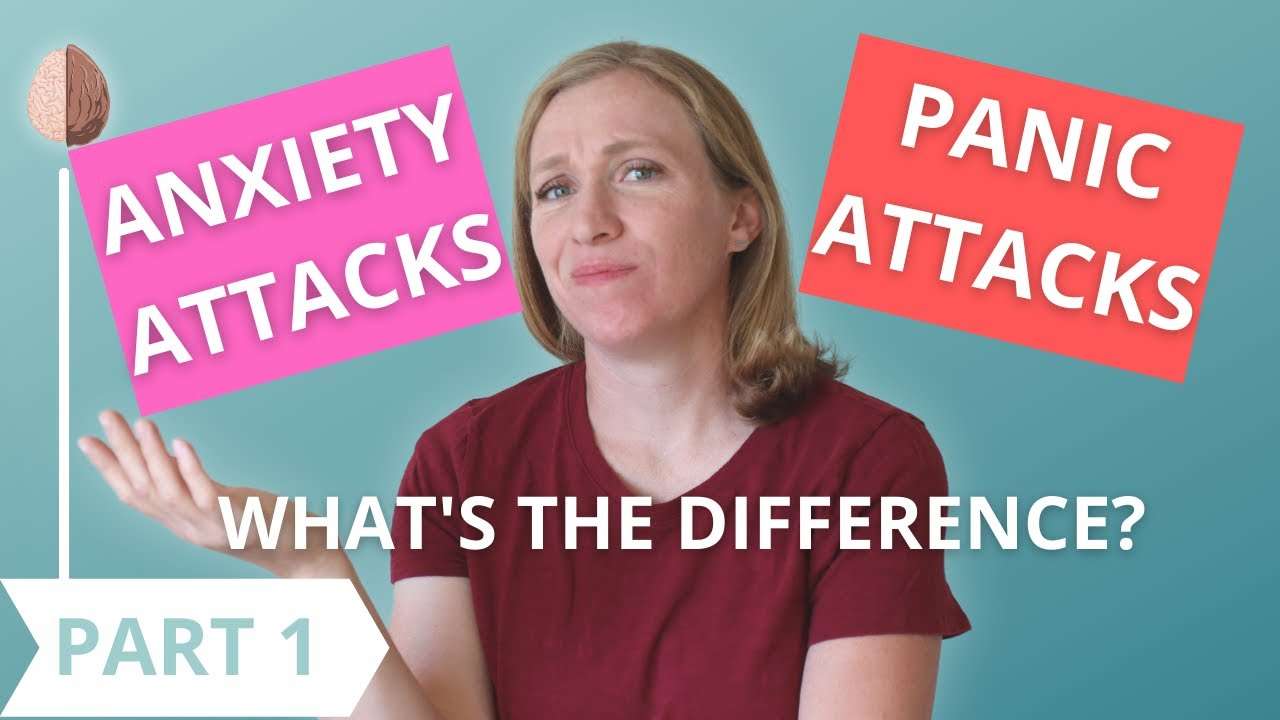Art therapy has been widely practiced for many, many years, both formally in a therapeutic context, and informally among those who simply feel better when they draw. Decades ago, psychologist Carl Jung recommended coloring mandalas (circular designs that can contain intricate patterns or symbols) as a therapeutic intervention to promote psychological health, as he perceived that drawing mandalas had a calming effect on his patients while facilitating their processing of thoughts and emotions. Since then, art therapists have long recommended this practice and have reported positive results, though these results were not demonstrated by research until later. While there is still room for many more studies on mandalas and drawing, in general, several studies have already shown us some important information about the effectiveness of using art for stress relief. Here are some of the most telling findings.
Creating Art Can Minimize Anxiety and Lift Mood
One study from researchers Chloe Bell and Steven Robbins randomly assigned 50 adults ages 30 and under to either create artwork or sort a series of art prints. Before either group was asked to do anything related to art, they were asked to engage in the mild stressor of creating a 10-item to-do list of their “most pressing concerns and worries,” which was designed to create a mildly negative mood and mild anxiety that the activities could then potentially minimize. Then, they were given assessments of their moods and anxiety levels. Finally, one group was provided paper, colored pencils, charcoal pencils, and oil pastels, as well as 20 minutes to create art. The second group was given a stack of 60 art prints and the instructions to sort them “based on their pictorial content” for the next 20 minutes. Both of these activities would expose the subjects to art, but only the first group was involved in the creative expression.
After three measures of negative mood and anxiety were collected before and after each intervention, the results showed that the group who created artwork experienced significantly greater reductions in negative mood and anxiety compared with the art-sorting group, showing that the mere act of creating art can significantly minimize negative mood and anxiety, some of the negative effects of stress. (If you’re worried about the subjects being deliberately stressed by thinking about their most pressing concerns for the sake of the study, researchers asked them all to create a list of their 10 most positive or favorite memories before they left, which can be quite helpful in itself.)
Creating Mandalas Can Minimize Symptoms of Trauma
Another study by researchers Patti Henderson and David Rosen from Texas A&M University and Nathan Mascaro from Emory University School of Medicine was conducted with those suffering from PTSD divided 36 subjects into two groups: those who drew mandalas for 20 minutes at a time for three days in a row, and those who were instructed to draw an object for the same period of time.
Those who had drawn mandalas showed a decrease in symptoms of trauma at a one-month follow-up, whereas those who drew an object did not. (It should be noted that other potential differences in the groups were studied, but this was the only difference that was statistically significant; some of these expected changes, such as differences in anxiety levels among those who drew mandalas and those who did not, have been found in similar studies with less traumatized subjects, so it is possible that more mild states of stress can be more easily affected by drawing.)
It should be noted that, in this study, participants were asked to create their own mandalas using symbols that represented their feelings or emotions related to their trauma as part of the design rather than coloring in patterned mandalas that had been previously created. Because of this, there might be some added element of catharsis here. However, the act of coloring mandalas is similar in that the choice of colors and the calming act of coloring itself are the same.
Coloring Pictures Can Relieve Anxiety — No Drawing Skills Necessary
A final relevant study was conducted by researchers Renee van der Vennet and Susan Serice. In the study, they measured 50 subjects’ anxiety levels, induced anxiety in subjects by asking them to write about a past fearful incident for four minutes, assessed their anxiety levels again, and then divided them into three groups: one that colored mandalas, one that colored a plaid design, and one that drew freely on blank paper. Each group drew for 20 minutes using six colored pencils.
The practice of coloring mandala drawings has been shown to reduce anxiety levels significantly.
The researchers measured anxiety levels both before and after the drawing activities and found significant reductions in stress in the coloring groups. They observed that those in the free-drawing condition seemed to pause to think about what to draw, and some appeared to struggle with the open-endedness of the drawing assignment; perhaps there were too many choices with free drawing, where mandala drawing allowed for more concentration, focus, and present-mindedness. (And sometimes having too many choices can be stressful in itself, even if the choices are relatively insignificant.)
This study is particularly relevant for those who aren’t entirely comfortable with their artistic abilities, but enjoy doodling and coloring (which is a large group!), and lends support for the stress relief coloring books that have become increasingly popular among adults.
Final Thoughts
This is all great news for those wanting to relieve anxiety and stress and lift their mood. If you’ve ever wondered if taking a few minutes to draw a picture can actually help with stress, now you know that it can. (Perhaps that’s why many of us instinctively doodle on the sides of our to-do lists, or why teens often draw pictures in class.) If you’ve wondered if a stress relief coloring book is worth a try (as I had), it appears that they can indeed be helpful, as the mandalas used in the third study were very similar to those in mandala coloring books sold in popular bookstores. Simply creating something you find to be beautiful, or that expresses your emotions can be helpful, so let your inner child loose and get out those colored pencils! Try some art activities that can relieve stress.
Whether it’s rooted in work, school, the past, or personal relationships, stress is a huge part of our lives. Stress can have many negative effects on physical and psychological systems. An inability to positively control or manage stress may lead to inappropriate behavior such as alcohol consumption, overeating, or neglecting feelings. It’s important to know that stress can be managed effectively, at very little cost, and in a fun way. Art therapy is a great therapeutic approach that you can use in your daily life to keep your stress levels low and your contentedness high.
What is Art Therapy?
Art therapy is an approach that involves the creative processes of art to improve one’s life. For example, drawing, coloring, painting, doodling, and sculpting are all examples of art forms that can be used as a means of therapy. Using art as a medium for healing promotes self-exploration, understanding, self-esteem, and awareness. It is a way for a person to improve their mental, emotional, and physical states, as well as their overall health. When you use imagery, colors, shapes, and designs as a part of your therapeutic process, your thoughts and feelings can be expressed through your art, rather than words that are often difficult to articulate to others. This means that you do not have to verbalize how you are feeling.
Art therapy can be done in counseling, where you work one-on-one with a trained and certified art therapist. However, the healing potential of art is not only effective in a counseling or psychotherapy setting. Art therapy techniques and approaches can be done at home, work, or school without a therapist. In some methods of art therapy, you are your own therapist.
Who can benefit from art therapy?
You don’t need to be a talented artist to engage in art therapy or to enjoy its benefits. The goal is not to create a masterpiece but to express yourself freely through art. The artistic results are secondary to the emotional benefits.
Art therapy can help people who have been exposed to loss or trauma. It can support people in overcoming addiction and mental health disorders. It has even been used in hospital settings for cancer patients. It’s also a common expressive therapy for children. The great thing about art therapy is that it can help the lives of so many people – even if you do not have a major concern or illness. Art therapy is beneficial to anyone who experiences the stress of everyday modern life.
Have you ever noticed how expressive arts therapy is calming and peaceful? Have you ever come home from a long work day in front of the computer and needed an outlet that wasn’t a screen? Engaging in art techniques can clear the mind, let us put feelings and thoughts onto paper or canvas, and leave us feeling accomplished and calm. It’s a great option for people who experience any sort of stress or upset in their lives, however big or small.
Your brain on art.
When we engage in the creation of our own art forms, we receive big benefits to our minds, both physically and mentally. When we produce art with our own hands, there is increased neural connectivity in the area of the brain that deals with introspection, memory, and self-monitoring. This means that this area is more active when engaged in producing art. Mentally, we become more psychologically resilient, we have increased positive perspectives, and become more self-aware. This helps us to cope with future problems, stressors, or events. It is said that the pairing of actually creating the art (motor processing) and thinking about expression (cognitive processing) is what makes art therapy so beneficial.
Types of art therapy for different feelings and emotions.
To do art therapy, you can either take a nondirected or directed approach. A nondirected approach is flexible, and less structured than a directed approach. For example, you would draw, paint, color, or sculpt without guidelines. A directed approach is more structured in the sense that you choose an art therapy activity that relates to certain feelings and emotions. With either approach, your feelings are expressed, and your stress levels decrease. The benefits of art therapy are provided in both approaches. Here are some examples of art therapy activities related to feelings and emotions that you can try:
Emotions.
- Paint or draw your emotions. Here, you want to think about how you are feeling and put that feeling into paper, however you see it.
- Create an emotion wheel. You’ll want to use lots of color for this activity! Label each emotion with a color that fits for you.
- Design a postcard that you will never send. This activity helps with releasing anger in a way that never has to be presented to someone else.
- Coloring books for emotions. You can buy, or print, certain coloring pages that were created to release emotions.
Happiness.
- Make a collage related to a quote that speaks to you. Turn words that mean a lot to you and turn it into a visual that is inspiring.
- Draw a wild invention. This activity will get your creative juices flowing and will most likely be wild and funny!
- Draw animals you love. For some people, animals are a source of love and happiness. Draw the ones that you love the most (your own pet included).
- Draw, color, or paint your idea of the perfect day or perfect home. This activity will help you create a visual of spaces and things that feel safe and warm to you.
Relaxation.
- Paint or color while listening to music. When art and music are paired together, our brains and bodies can relax.
- Make a mandala. You can either print one off or draw your own – this is a meditative symbol that is relaxing to look at and work with.
- Draw something very big! Get out the large pieces of paper or a big cardboard box and get your body moving.
- Choose colors that are relaxing and calming to you and only use those. Sometimes certain colors elicit different feelings for us. Choose ones that speak to you.
- Draw, paint, or sculpt outdoors. The sights, sounds, and atmosphere of the outdoors, when paired with art, are very relaxing.
Trauma and Loss.
- Create a collage of your worries. Put whatever worries you in your life on paper.
- Turn illness into a masterpiece. If you or someone close to you is ill, turn those feelings into something meaningful.
- Paint someone you have lost. If you have lost someone close to you, remember him or her and make that special person close to you again.
- Draw a safe space. You can refer to your safe space when you need a reminder.
Other types of art therapy.
Art therapy is available in adult coloring books that are affordable, easy, and even portable. It would be best to go look at these books and take a peek inside. Think about which ones elicit different feelings, and choose one that speaks to you and how you are feeling or what you are going through.
Another form of art therapy is paint nights. This type of art therapy is done in a group setting and often held at local restaurants and bars. You go with friends and sit with other people who are all painting the same picture. In the end, you see how everyone painted the same picture differently. You can also host your own paint night by gathering up some friends or family and purchasing some paint and canvas. You can designate a specific picture for everyone to draw, or you can leave it up to the group! Art therapy in a group allows for free expression in an environment that is safe and accepting.
Art therapy is an easy, affordable, and beneficial way to express feelings, reduce stress, and remind us of the happy things. We are able to put difficult feelings into something visual and meaningful. When we draw, color, or paint, our brains become active and are better at helping us out with any future stressors.
This post was originally published on www.partselect.com.
About the Author: Caileigh Flannigan
 Caileigh is a play practitioner who uses forms of play such as exploring the outdoors and experimenting with loose parts as a way to promote children’s development and emotional healing. She is spreading the word about the importance of childhood development through free play in natural environments.
Caileigh is a play practitioner who uses forms of play such as exploring the outdoors and experimenting with loose parts as a way to promote children’s development and emotional healing. She is spreading the word about the importance of childhood development through free play in natural environments.



